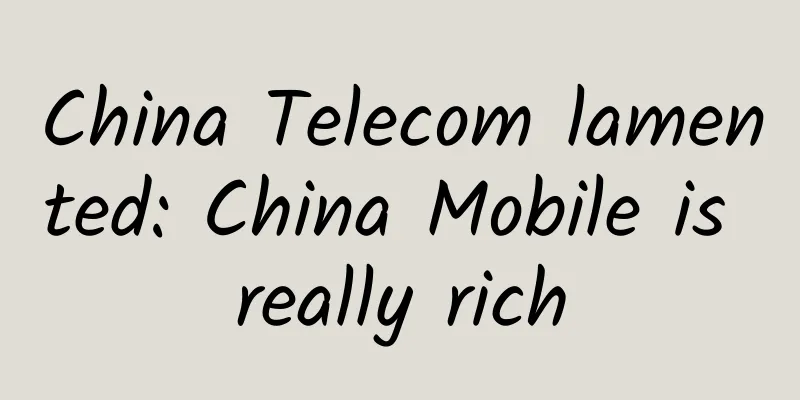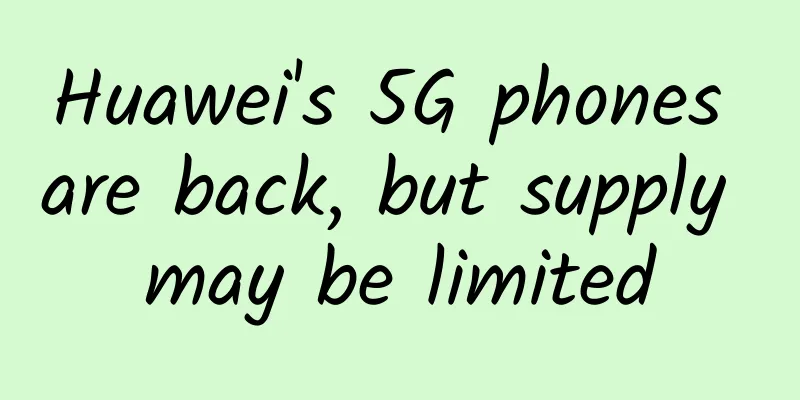A brief analysis of QQ, WeChat and Momo: Why they can capture the hearts of users

|
A friend once lamented: Looking at the social product circle, Momo is the only product that survives relatively well under the pressure of Tencent. I can’t say that I completely agree with this, but I do like the “Momos” model. The current situation of QQ, WeChat and Momo can only be interpreted from their respective development history. If we want to rank them based on their current product forms, it is really impossible to draw a convincing conclusion. I can only say: the initial appearance of the product may become a lifelong brand of the product. These brands are carved in the minds of users over time and eventually present the current situation. There are many factors behind the success of QQ, WeChat, Momo, etc. (such as: historical background, strategy, model, etc.). Here I will just briefly talk about my views from my personal user perspective, because if I were to talk in detail about these three giants, I would be showing off my skills in front of an expert. 1. Background of the times: Every successful product conforms to the needs of the timesWhen QQ appeared: Mobile phones were not yet popular, phone calls and text messages were very expensive, but Internet cafes sprang up in large numbers. QQ chat and QQ video became the only cheap and real-time way for young people to solve communication problems at that time. When WeChat appeared: smartphones were on the rise, mobile Internet speeds were getting faster and faster, and rates were getting cheaper and cheaper; WeChat could access the address book, but phone and text messaging charges were still expensive, and QQ was already cumbersome. Working people hoped for a simple social software. When Momo appeared: it coincided with the rise of smartphones, and mobile Internet speeds were getting faster and faster, and charges were getting cheaper and cheaper; there were not many products and competitors for stranger social networking, and the public was very curious about the crowd structure near LBS; social pressure was high, and people needed to find a space to release their thoughts that were difficult to reveal in front of acquaintances. This situation forced young people to try to find someone to talk to in unfamiliar communities. 2. Its status in the industry must be based on its excellent functions and suitable model.QQ:
WeChat:
Momo:
3. Its carrier, mode and function determine its user profileQQ: QQ can be used on PC and mobile devices. For younger users who do not have mobile phones but have social needs, they can choose PC. Therefore, its target audience is the entire population, aged 10 to 55 years old. WeChat: Since WeChat PC only has a web version, users must have their own mobile phones. WeChat brings decentralization, no levels, no photo albums, no visit records, but public accounts . Its main appeal to the crowd is: efficient communication and knowledge learning, which determines that its users are more rigorous and do not take fancy comparisons and fun as their main appeal. Their age group is between 16 and 55 years old. Momo: Momo only has a mobile version. Because it is a stranger social network, its user group only includes people who are curious and like to hunt for new things. The age range is 16 to 40 years old. 4. Advantages and disadvantages I see (personal opinion from today’s perspective)QQ is a product that covers a wide age range for all people. From the perspective of a working adult, there are indeed many areas that need to be improved. However, when I really look at certain functions from the perspective of a product person, I have to agree that the current functions on QQ are reasonable, because it is not just a memory of the past, there are also many "teenagers like myself in the past" who are full of love for it. Here I will explain a few functions: (1) Is it necessary for QQ to retain the functions of offline, invisible, and online status? The emergence of this function was in line with the fact that QQ only had a computer version at the time, and it was impossible to log in 24 hours a day. Therefore, setting up offline and online functions did improve the user experience for the PC version. However, if it is used on mobile QQ, then this function is unnecessary. I personally think that the reason why this status still exists is, one, the memory of some people, and the other is that the PC version of QQ is highly active, so this function must be retained. If the PC version of QQ no longer exists one day, this status setting will disappear. (2) Do QQ’s account and membership levels violate decentralization? Do they create privileges and undermine equality? The setting of QQ account level does not violate decentralization. For competitive teenagers, this setting is equivalent to a trophy, a star, a moon, and a sun, which they can get through their own "efforts". Therefore, this encourages teenagers to use QQ for a longer period of time. For adults, this is also a record of their own use of QQ and a medal they give to themselves, so it is necessary to keep it. I personally think that the setting of QQ member levels and privileges goes against decentralization and is shaping privileges. Although companies can create income through this model, the platform interferes too much with the demands of all users for equal rights and interests, and many barriers are artificially set up. These barriers are not obtained through "hard work" but through money. This will not leave a good impression on anyone, but only disgust and helplessness. WeChat has done a very good job in this regard. (3) Are QQ skins and space decorations outdated? This cannot be simply summed up as outdated or not. With the accumulation of experience and social experience, people's aesthetic demands at different ages are inconsistent. Therefore, we can only give a brief overview from the perspective of age. Adults: For adults, there is not much demand for QQ skins and space decorations, but it is still necessary to maintain a certain aesthetic. I personally seldom decorate my space now, but I used to change space decorations and skins frequently. Teenagers: QQ skins and space decorations should exist specifically for this group. Their ideas and aesthetics are constantly reshaped with age. Their cognition, feelings, and pursuit of freshness need to be expressed in a form, so QQ skins and space decorations are a good carrier. (4) Why can’t you view all of a person’s posts with photos by sliding across their photos on QQ? Instead, why do you have to browse through them one by one? I think this is an area where QQ can improve, but the structure of QQ's backend may make it difficult to optimize. Tencent's product managers can try to understand whether there are opportunities and hopes for improvement. I hope that one day, when I am browsing QQ's posts, I can click on any post with a photo, and then slide the photo to view all the posts with photos in the corresponding account; instead of account A having 100 posts, 80 of which have photos, and I have to read all 80 posts 80 times (click -> browse photos -> exit this post, scroll to the next post -> click again, browse photos). WeChat does a good job in this regard, perhaps due to its internal structure. QQ Album QQ Album can be said to be the earliest cloud service, so the concept of cloud service has long been reflected in QQ Album, but it was not so clear and explicit at the time. QQ Album preserves many beautiful memories and youthful times, and many people will put their every bit into QQ Album. This function cannot be replaced by WeChat at present, and it can be said to be a core competitiveness of QQ at present. No one I know says that WeChat is bad. Allen Zhang is already a god. Indeed, WeChat has many great innovations, such as language chat, official accounts, QR codes, red envelopes, sending locations, shake, people nearby, message retrieval, mini programs , etc. Its defined style and expansion of social culture make people feel friendly and surprising. We have seen its omnipotence from WeChat. I think functions such as red envelopes, voice, QR codes, wallets, and mini programs are great breakthroughs, which have improved social efficiency in a comfortable way. But it cannot be said that WeChat has no flaws. Here I will talk about its advantages and disadvantages for your evaluation: Advantages: Has anyone noticed that when browsing WeChat Moments , you can browse all the comments with photos on the corresponding account by swiping left and right on the photos? I personally think this form is really convenient and much better than the experience of QQ and Momo. Disadvantages: There is nothing wrong with WeChat's functions, but WeChat does not do well in caching. WeChat will store a large number of viewed Moments pictures in the cache without deduplication, resulting in its cache occupying a large space, which can be up to several GB, several times or even dozens of times the size of chat voice + chat pictures, which poses a challenge to the mobile phone's memory. MomoIn the process of Momo's development, some excellent features have appeared, but some excellent features have been lost at present. I don't know how Momo's product managers think about this product, and whether they have defined the path that Momo should take in their minds. I really like Momo's LBS model, but many of Momo's functions cannot be called great. I can only say that it has great potential. From the perspective of a personal user, I would like to share a few opinions for everyone to discuss. (1) Do I have to register to watch and experience MOMO? I remember that in the past, Momo allowed users to view nearby people without registering, but the data on nearby people was not particularly much. This gave users a chance to get close to and understand MOMO. For an app like Momo that has been misunderstood, this process is very necessary, just like a merchant showing samples to buyers. However, many products now do not allow users to see samples, but require users to pay a "deposit" before they can see the samples. This goes against the fact that product promotion requires a gradual process. I was disappointed that Tantan required registration to use its features, and eventually gave up using it. In the Internet industry, attracting new users is a very important thing, but you cannot force them to do so. You need to let users have a preliminary understanding of the product and make the product have a good reputation. This is especially important for products in unfamiliar communities, and then you can finally guide them to register. Otherwise, all the forced new users will ultimately result in user disgust and zombie accounts. (2) What do you think about setting membership levels and rights? As explained in the above QQ membership level settings, I am against the establishment of membership levels. A flat structure should be established in both unfamiliar communities and acquaintance communities. The platform serves the public. Determining the size of member rights by the level of membership is undoubtedly a way of condoning inequality and even condoning "voyeurism". The content and behaviors on the platform are all user behaviors and the output of users' labor. Their willingness to make them public is not out of selfishness. The platform sets up barriers to block such disclosure, which is a restriction and interference on user expression and will give people the pleasure of "voyeurism". This is definitely not the trend of future development. (3) Does Momo need to actively read the address book? Momo is defined as stranger social networking, and this is the positioning that Momo needs to remember. WeChat and QQ can both read address books because they are acquaintance social networking. Momo's active reading of address books mixes acquaintance social networking and stranger social networking together, which will lose the value and significance of Momo itself. This move can only be said to be superfluous. But I don’t object to setting up a search function in Momo, where users can actively enter their phone numbers to search and see if there are any acquaintances who have registered and use Momo. In fact, from one detail we can see that the maturity of WeChat's product considerations is much higher than that of Momo. Momo's reading of the address book is puzzling, but WeChat did not follow Momo's example of setting a read label for messages, because the acquaintance community is based on emotions. If WeChat introduces the read function, if a friend reads the message but does not reply in time, this will create an illusion of being ignored between the two acquaintances. But it doesn’t matter in a community of strangers, because there is no emotional foundation and the psychological expectation of whether to reply is particularly high. (4) Are blocking, reporting, deleting, unfollowing, deleting conversations, etc. necessary? There may be reasons for Momo to set up these functions, but its current business processes should be reorganized. During the use, I personally felt it was so confusing that I could hardly get out. In the context of building a harmonious community, the blacklisting function is actually a bit redundant. I'll elaborate on this later when I've thought it through. 5. OutlookIn the field of social networking among acquaintances, there are already great products such as QQ and WeChat, so the chances of a new and influential social networking product emerging among acquaintances is not particularly great. Although Pony once said that "what he worries most is not understanding the ideas of young people", changes in young people's ideas may provide opportunities for the creation of new products. At the same time, this also shows that the giant Tencent will always keep a close eye on the trends in the industry and will not relax at all. In the field of stranger social networking, although there are already a large number of products such as Momo, Kuaishou , and Tantan, none of them has made a particularly great breakthrough like WeChat. In my opinion, stranger social networking has greater potential than acquaintance social networking in terms of breadth and depth. I look forward to the emergence of great products in stranger social networking, and it would be an honor to contribute to such products. The internationalization of social products has yet to be attempted by Tencent, Momo, etc. Speaking of internationalization, judging from the product performance, only WeChat has made such preparations. Although WeChat's internationalization has encountered difficulties, it is still very possible to make some attempts at the internationalization of stranger social networking. I have always believed that stranger social networking can be achieved with the help of localization, because localization can take into account both social demands and resolve cultural differences. In the world of products, improving service efficiency, enhancing value orientation, making users happy ideologically, making users feel dependent on products, and adapting to the needs of the times are the ultimate right path for products. Although I tried my best in writing this article, there are always some heights that I cannot reach and some limitations in my thinking when it comes to the three giant products, WeChat, QQ, and Momo. I am welcome to correct me in the comments. Thanks! Author of this article@ A small southern town with snow falling was compiled and published by (Qinggua Media). Please indicate the author information and source when reprinting! Product promotion services: APP promotion services Advertising |
<<: Answers to ASO FAQs, give newbies a tomorrow!
Recommend
How to write a good advertising case analysis? Three simple steps to tell you
During the holidays, a reader asked me a question...
Guangzhou lawyer mini program development function, lawyer legal consultation mini program development how much does it cost?
Recently a friend consulted me and wanted to make...
An old friend shared that a recommended job in Changsha is to drink tea and provide takeaway service. I sincerely recommend it to everyone
Changsha tea tasting is worth recommending. The s...
4 key points for an excellent event planning!
When it comes to event planning , perhaps in many...
"Mars" faces "Chang'e": "Mars and the Moon" will appear in the sky on the 23rd
According to astronomical science experts, Mars w...
The latest research found that comets from outside the solar system originally ran away from the solar system!
Comets from outside the solar system, some of the...
iOS users reject ad tracking, advertisers turn to Android
App Tracking Transparency (ATT) is a new feature ...
Lithium iron phosphate is recovering, and the dominance of ternary materials may change
Recently, the market situation of the rise of ter...
About the new MacBook Pro: Here are some things you need to know
Two days ago, the 2016 MacBook Pro was released, w...
How much does it cost to customize a fresh fruit and vegetable delivery app in Harbin?
WeChat Mini Program is an application that users ...
Ding Lei raises pigs and Jack Ma raises dairy cows
China's ranches have become a hot spot for var...
How long does it take to move in after renovation? Can green plants remove formaldehyde? A few facts you may not know
April 26th is "World Free Formaldehyde Day&q...
WM Motor EX5 is delivered in batches as scheduled, and plans to deliver 1,000 units this year
On September 28, WM Motor announced that its firs...
Long-term fatigue after Yang Kang, beware of "catching COVID-19"!
More and more people say that they experience sym...
"April snow" is actually related to gender imbalance? Henan is formulating the first technical guide for prevention and control
In early summer, the catkins of willow trees in Z...









